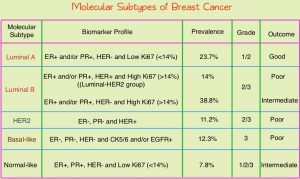SUMMARY: Prostate cancer is the most common cancer in American men with the exclusion of skin cancer, and 1 in 9 men will be diagnosed with Prostate cancer during their lifetime. It is estimated that in the United States, about 288,300 new cases of Prostate cancer will be diagnosed in 2023 and 34,700 men will die of the disease. The development and progression of Prostate cancer is driven by androgens. Androgen Deprivation Therapy (ADT) or testosterone suppression has therefore been the cornerstone of treatment of advanced Prostate cancer, and is the first treatment intervention. Approximately 10-20% of patients with advanced Prostate cancer will progress to Castration Resistant Prostate Cancer (CRPC) within five years during ADT, and over 80% of these patients will have metastatic disease at the time of CRPC diagnosis. The malignant transformation of prostatic epithelial cell as well as the development of CRPC has been attributed to deleterious alterations in a variety of genes including loss-of-function alterations in Homologous Recombination Repair (HRR) genes.
DNA damage is a common occurrence in daily life by UV light, ionizing radiation, replication errors, chemical agents, etc. This can result in single and double strand breaks in the DNA structure which must be repaired for cell survival. The two vital pathways for DNA repair in a normal cell are BRCA1/BRCA2 and PARP. BRCA1 and BRCA2 are tumor suppressor genes that recognize and repair double strand DNA breaks via Homologous Recombination Repair (HRR) pathway. Homologous Recombination is a type of genetic recombination, and is a DNA repair pathway utilized by cells to accurately repair DNA double-stranded breaks during the S and G2 phases of the cell cycle, and thereby maintain genomic integrity. Homologous Recombination Deficiency (HRD) is noted following mutation of genes involved in HR repair pathway. At least 15 genes are involved in the Homologous Recombination Repair (HRR) pathway including BRCA1, BRCA2, PALB2, CHEK2 and ATM genes. Mutations in these genes predispose an individual to develop malignant tumors. Mutations in BRCA1 and BRCA2 account for about 20-25% of hereditary breast cancers and about 5-10% of all breast cancers. They also account for 15% of ovarian cancers, in addition to other cancers such as Colon and Prostate. BRCA mutations can either be inherited (Germline) and present in all individual cells or can be acquired and occur exclusively in the tumor cells (Somatic). Somatic mutations account for a significant portion of overall BRCA1 and BRCA2 aberrations. Loss of BRCA function due to frequent somatic aberrations likely deregulates HR pathway, and other pathways then come in to play, which are less precise and error prone, resulting in the accumulation of additional mutations and chromosomal instability in the cell, with subsequent malignant transformation. Homologous Recombination Deficiency therefore indicates an important loss of DNA repair function.
The current National Comprehensive Cancer Network (NCCN) guidelines for prostate cancer (version 1.2022) recommend germline testing for the subsets of patients with prostate cancer who are more likely to have germline DNA repair mutations. They include men with node positive, high-risk or very high-risk localized prostate cancer, men with metastatic prostate cancer, and men meeting family history criteria. NCCN recommends considering germline testing for men with personal history of prostate cancer and intermediate risk prostate cancer and intraductal/cribriform histology and personal history of exocrine pancreatic, colorectal, gastric, melanoma, pancreatic, upper tract urothelial, glioblastoma, biliary tract or small intestinal cancers. Germline testing panel sizes vary from dedicated BRCA1/2 testing to extended 91 plus-gene panels
The goal of this study was to investigate the association between rare deleterious variants and Variants of Unknown Significance (VUS) across the genome and in candidate genes, particularly DNA repair genes, and identify genes associated with aggressive prostate cancer.
The researchers conducted a two-stage exome-sequencing genetic association study, to identify rare genetic variants associated with aggressive prostate cancer. This analysis included 17,546 patients of European ancestry with prostate cancer from 18 epidemiological studies across the US, Europe and Australia. The study population included 9185 men with aggressive prostate cancer and 8361 men with nonaggressive prostate cancer. Aggressive prostate cancer was defined as at least one of the following: T4 disease, T3 plus a Gleason score of 8 or more, metastatic disease, or death from prostate cancer, while nonaggressive prostate cancer was defined as localized T1/T2 disease and a Gleason score of 6 or less. The researchers focused their study on 29 DNA repair pathway and cancer susceptibility genes previously linked with prostate cancer, in addition to a group of 167 genes thought to be related to DNA damage repair. They then looked for associations between deleterious genetic variants or Variants of Uncertain Significance (VUS) and aggressive versus nonaggressive prostate cancer, using a relatively modest threshold for significance.
The strongest evidence of association with aggressive or metastatic prostate cancer was noted for rare deleterious variants in known prostate cancer risk genes BRCA2 and ATM (P<0.0000019), followed by NBN (P=0.00017). This study found nominal evidence (P <0.05) of association with rare deleterious variants in MSH2, XRCC2, and MRE11A. Five other genes analyzed, TP53, RAD51D, BARD1, GEN1, and SLX4, had evidence of greater risk with an Odds Ratio (OR) of 2 or more, but carrier frequency differences between aggressive and nonaggressive prostate cancer were not statistically significant. Deleterious variants of the 11 candidate genes identified in the study were carried by 2.3% of patients with nonaggressive prostate cancer, 5.6% with aggressive prostate cancer, and 7.0% with metastatic prostate cancer.
In conclusion, the researchers from this analysis of the largest cohort of prostate cancer patients were able to identify DNA repair pathway gene variants, associated with aggressive prostate cancer. Testing should be extended to men without aggressive prostate cancer, as men carrying deleterious variants in these genes are likely to develop advanced disease.
Germline Sequencing Analysis to Inform Clinical Gene Panel Testing for Aggressive Prostate Cancer. Darst BF, Saunders E, Dadaev T, et al. JAMA Oncol. Published online September 21, 2023. doi:10.1001/jamaoncol.2023.3482

